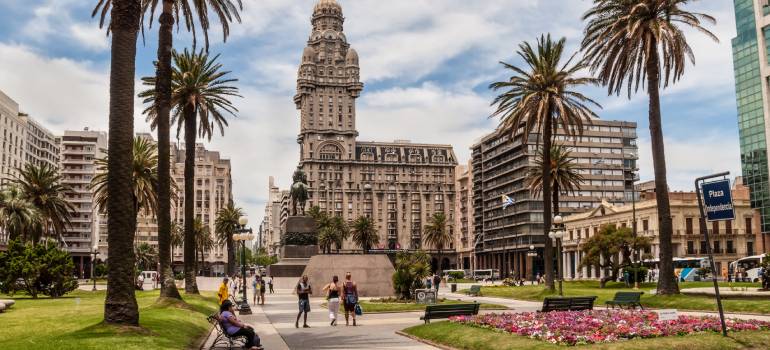- Home
- About us
- News
- Events
- EXPORT Export
-
BUY
Buy
Buy
- INVEST Invest
- COUNTRY BRAND Country Brand
-
INFORMATION CENTER
Information center
InformationCenterInformationCenterReports Country reports Department reports Foreign trade reports Product-Destination worksheet Sectors reports Work documentsStatistical information Classification Uruguay XXI Exports Imports Innovative National Effort Macroeconomic Monitor Tools Buyers Exporters Investors
- Contact
-
Languages
Uruguay is a symbol of confidence and security
The management capacity, the backing of the scientific sector and the support of its inhabitants make the country an exception in the midst of the health crisis.
Share:

The reality of Uruguay during the pandemic contrasts with that of other countries of South America. Without declaring mandatory lockdown, the country was able to keep the rate of infection low, placing itself favorably in the ranking of countries that are beating the virus and reducing the economic and health impact. Only three months after the arrival of the disease, Uruguay is preparing for the reactivation of the economy -which was never fully paralyzed- and the return to face to face classes, after a very good experience with distance education by the hand of its Plan Ceibal (One Laptop per Child).
Like the rest of the countries, from the beginning Uruguay closed its borders, suppressed face-to-face education and massive events. However, what makes it an exception is the transparency with which it has informed the population about the virus and how it has stimulated confinement without restricting freedom to decide how to go about the moment.
Since the first case of COVID-19 was diagnosed on March 13, President Luis Lacalle Pou's decisions have been guided by the recommendations of more than 40 experts, which an honorary advisory board he nominated has assembled in daily reports.
As a way to alleviate the economic consequences, the government lowered the salaries of ministers, legislators and high-ranking public officials. In addition, Uruguay's excellent relationship with international financial organizations such as the Inter-American Development Bank (IDB) and the Andean Development Corporation (CAF) allows it access to low and quickly approved credit lines.
The universal health system and science, pillars in the fight against COVID-19
The infrastructure and universality of the health system have also been decisive in the results achieved so far.
To begin with, almost 100 per cent of the Uruguayan population has access to safe water, which is essential for hand hygiene, one of the main barriers to protection. In addition, the health system has not been compromised due to the integration of the public and private sectors and an effective emergency and home-care system.
The number of stretchers in intensive care centres (ICUs) increased from 19 to 26 per million people in this period and the number of VOC-19 tests performed, according to the Worldometer site, is three times that of its neighbouring countries. In addition, recommendations not to attend health centres were echoed by the population and home care was encouraged.
The academy has also played an important role by demonstrating its capacity for rapid response and innovation. Young scientists from all over the country researched and worked on the development of artificial respirators, devices to inactivate the virus through ultraviolet light, and on the creation of kits to store and transport virus samples.
At the forefront of technology and connectivity, Uruguay implemented teleworking and distance education
In terms of education, before the pandemic Uruguay already had the conditions for online teaching thanks to the Plan Ceibal, an educational policy within the framework of One Laptop per Child, which for 13 years has been providing computers to students in public education with the aim of democratizing access and technology.
Additionally, Uruguay has a high degree of connectivity: 85% of households have fixed broadband access (Internet via fibre optics or ADSL) with download speeds ranging from 30 to 120 Mbps. In addition to providing significant support for education, workers and companies could easily adopt teleworking without disrupting their operations in many cases.
In this context, solidarity and synergy have been the most effective strategies the country has found to address the health crisis.
